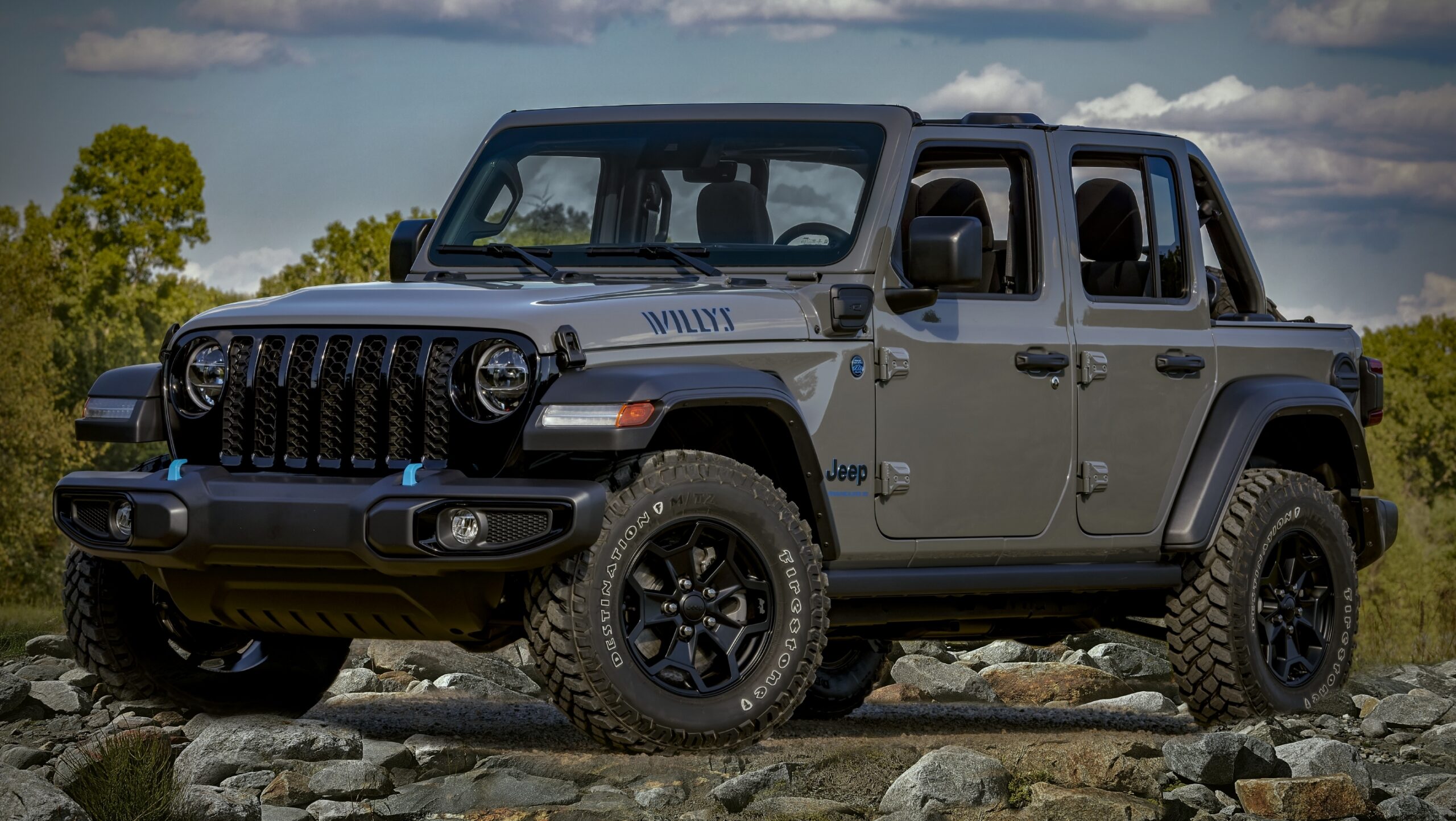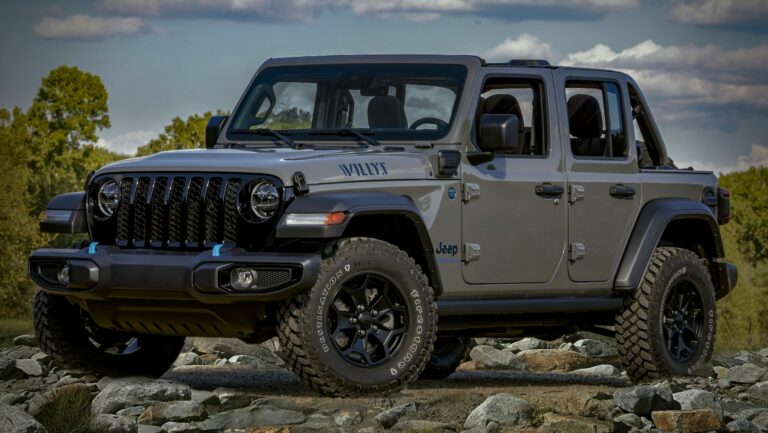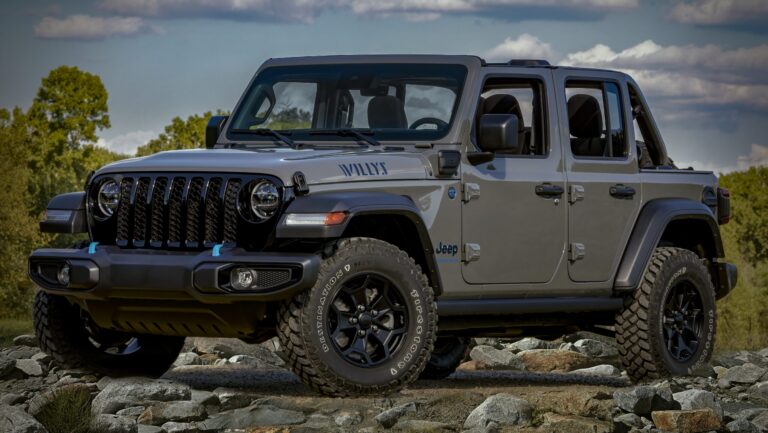Jeep Wrangler Motors For Sale: Your Comprehensive Guide to Powering Your Adventure
Jeep Wrangler Motors For Sale: Your Comprehensive Guide to Powering Your Adventure jeeps.truckstrend.com
The Jeep Wrangler isn’t just a vehicle; it’s a lifestyle, an icon of freedom, and a symbol of rugged capability. From navigating city streets to conquering the toughest off-road trails, a Wrangler’s heart – its engine – is paramount to its performance and your overall experience. But what happens when that heart starts to falter, or when you simply crave more power for your next adventure? This is where the world of "Jeep Wrangler Motors For Sale" becomes incredibly relevant.
This comprehensive guide will delve into everything you need to know about purchasing a replacement or upgrade engine for your beloved Wrangler. Whether you’re a seasoned mechanic, a DIY enthusiast, or simply an owner facing a tough decision, understanding the landscape of available motors, their costs, and the crucial considerations involved will empower you to make an informed choice and keep your legendary rig roaring for years to come.
Jeep Wrangler Motors For Sale: Your Comprehensive Guide to Powering Your Adventure
Why Consider a Replacement Jeep Wrangler Motor?
The decision to replace a vehicle’s engine is significant, often driven by necessity or a desire for enhancement. For Jeep Wrangler owners, several common scenarios lead them to seek out motors for sale:
- Engine Failure: This is perhaps the most common reason. Over time, or due to factors like neglected maintenance, severe off-roading stress, overheating, or simply high mileage, even the most robust engines can give out. A catastrophic failure (e.g., thrown rod, cracked block, major internal damage) often makes replacement more cost-effective than extensive repairs.
- Performance Upgrade: Many Wrangler owners desire more power than their stock engine provides. This is particularly true for older models or those looking to run larger tires, carry heavier loads, or tackle more challenging terrain. Swapping a smaller engine for a more potent factory option (e.g., upgrading a JK’s 3.8L to a 3.6L Pentastar, or even a Hemi conversion) is a popular route.
- Project Builds & Restorations: Enthusiasts often acquire older Wrangler chassis for custom builds, restorations, or dedicated off-road rigs. In these cases, a reliable, sometimes more powerful, engine is a foundational component for the project.
- Cost-Effectiveness: When the chassis, body, and transmission of a Wrangler are in good condition, but the engine is failing, replacing the motor can be significantly cheaper than buying a whole new or used vehicle. It allows owners to retain their familiar vehicle while breathing new life into it.

Types of Jeep Wrangler Motors Available
The market for Jeep Wrangler motors is diverse, reflecting the vehicle’s long production history and varied engine options. Understanding these categories is crucial for your search:
By Generation and OEM Engine Type:
- YJ (1987-1995): Primarily features the robust 4.0L AMC Inline-6 (I6) and the 2.5L AMC Inline-4 (I4). The 4.0L is highly sought after for its legendary durability.
- TJ (1997-2006): Continues with the beloved 4.0L I6 and 2.5L I4, with minor refinements. The 4.0L from this era is often considered the pinnacle of the AMC I6.
- JK (2007-2018): Introduced the 3.8L EGH V6 (2007-2011), often criticized for being underpowered. This was replaced by the significantly more powerful and efficient 3.6L Pentastar V6 (2012-2018), which is a popular upgrade for earlier JKs.
- JL (2018-Present): Offers a range of modern engines:
- 3.6L Pentastar V6: Standard, refined for the JL.
- 2.0L Turbo I4 (Hurricane): Offers good torque and fuel economy.
- 3.0L EcoDiesel V6: Provides immense torque for towing and off-roading (discontinued for new orders after 2023).
- 6.4L Hemi 392 V8: The factory-installed powerhouse in the Rubicon 392.
By Condition:
- Used (Pull-Outs/Salvage): These are engines removed from wrecked or decommissioned vehicles. Their condition can vary wildly, from low-mileage gems to high-mileage units with unknown histories. They are typically the most affordable option.
- Remanufactured/Rebuilt: These engines have been disassembled, inspected, and had worn or damaged components replaced with new or reconditioned parts. They often come with a warranty and offer a good balance of cost and reliability. Reputable remanufacturers follow strict standards.
- New Crate Engines: These are brand-new engines, often directly from the manufacturer (Mopar for Jeep) or aftermarket performance companies. They offer peak reliability, performance, and usually a comprehensive warranty, but come at the highest price point.
- Engine Swaps (Non-OEM): While not "Jeep Wrangler motors" in the traditional sense, many enthusiasts opt for non-OEM swaps like GM LS V8s or various Ford V8s. These require significant custom fabrication and specialized kits but offer immense power potential.
Where to Find Jeep Wrangler Motors For Sale
The hunt for the right engine can take you to various corners of the market:
- Online Marketplaces:
- eBay: A vast selection of used, remanufactured, and new crate engines from various sellers. Good for price comparison.
- Craigslist/Facebook Marketplace: Excellent for finding local deals on used engines, potentially allowing for in-person inspection. Be cautious and verify seller legitimacy.
- Specialized Auto Parts Retailers & Performance Shops:
- Summit Racing, Jegs, Quadratec: Major online retailers offering new crate engines, remanufactured units, and engine swap kits.
- Local Performance/Off-Road Shops: Many specialize in Jeep modifications and can source or even build custom engines.
- Salvage Yards/Auto Recyclers:
- LKQ Pick Your Part, Local Salvage Yards: A primary source for used pull-out engines. You might find great deals, but verifying condition can be challenging.
- Jeep Forums & Online Communities:
- JeepForum.com, JLWranglerForums.com, JK-Forum.com: Dedicated "For Sale" sections often feature engines from fellow enthusiasts. This can be a great way to find well-maintained units or get advice.
- Dealerships (Mopar):
- Your local Chrysler, Dodge, Jeep, Ram dealership can order new Mopar crate engines, offering genuine OEM quality and warranty.
- Remanufacturing Companies:
- Jasper Engines & Transmissions, ATK Engines, Fraser Engines: These companies specialize in professionally rebuilding engines and often sell directly or through their network of distributors.
Key Considerations When Buying a Jeep Wrangler Motor
Purchasing an engine is a significant investment. Careful consideration of these factors will help ensure a successful transaction:
- Compatibility:
- Model Year & Sub-Model: Ensure the engine is compatible with your specific Wrangler year and trim. Wiring harnesses, ECU (Engine Control Unit), and mounting points can differ even within the same generation.
- Transmission: Is the engine designed for an automatic or manual transmission? While often adaptable, it’s best to match or confirm compatibility.
- Accessories: Does the engine come with accessories like the alternator, power steering pump, AC compressor, intake manifold, exhaust manifolds, etc.? "Long block" usually means just the main engine block and heads, while "complete" or "turn-key" includes more components.
- Condition & History (Especially for Used Engines):
- Mileage: Lower mileage is generally better, but not always indicative of condition.
- Maintenance Records: Ask for any available service history.
- Compression Test/Leak-Down Test: If possible, request results or perform these tests if inspecting in person. These are critical indicators of internal health.
- Fluid Contamination: Check for milky oil (coolant in oil) or dark, burnt-smelling oil.
- Visible Damage: Inspect for cracks, broken mounts, or signs of overheating.
- Running Video: For pull-out engines, a video of the engine running before removal is invaluable.
- Seller Reputation & Warranty:
- Reviews & References: Check online reviews for sellers, especially on marketplaces.
- Warranty: New crate engines come with a manufacturer warranty. Remanufactured engines typically have a warranty (e.g., 1-3 years, unlimited mileage). Used engines rarely have a warranty, or only a very limited one (e.g., 30-90 days). Understand the terms thoroughly.
- Budget:
- Engine Cost: This is just one part of the equation.
- Shipping Costs: Engines are heavy and require freight shipping, which can be substantial.
- Installation Costs: If you’re not doing it yourself, factor in professional labor.
- Ancillary Parts: You’ll likely need new gaskets, fluids, filters, belts, hoses, and potentially a new starter, water pump, or other components.
- Core Charge: Many sellers of remanufactured or new engines require a "core charge," which is refunded when you return your old engine.
- Shipping & Logistics:
- Freight Shipping: Ensure the seller can properly package and ship an engine.
- Liftgate Service: Do you need a liftgate on the delivery truck if you don’t have a forklift or loading dock?
- Delivery Address: Can it be delivered to a residential address or only a commercial one?
- Legalities & Emissions:
- State/Local Laws: Be aware of emissions regulations in your area. An engine swap (especially to a non-OEM type) might require specific certifications or modifications to pass inspections.
The Buying Process: A Step-by-Step Guide
Navigating the purchase of a Jeep Wrangler motor can be streamlined with a clear process:
- Step 1: Identify Your Needs & Budget: Determine exactly what engine you need or want (OEM replacement, upgrade, specific swap) and establish a realistic budget that includes the engine, shipping, and installation/ancillary parts.
- Step 2: Research & Locate Potential Sellers: Use the sources mentioned above (online marketplaces, salvage yards, specialized retailers, forums) to find suitable options.
- Step 3: Verify & Inspect (Crucial for Used):
- Ask Detailed Questions: For used engines, inquire about mileage, maintenance history, reason for removal, and any known issues.
- Request Photos/Videos: Ask for high-resolution images from multiple angles, including any identifying numbers. A video of the engine running before removal is ideal.
- Pre-Purchase Inspection (If Possible): If buying locally, arrange for a mechanic to inspect the engine.
- Check Seller Reviews: Before committing, verify the seller’s reputation.
- Step 4: Negotiate & Purchase: Once you’re satisfied with an engine, negotiate the price and shipping terms. Understand the warranty (if any), return policy, and core charge.
- Step 5: Arrange Shipping/Pickup: Confirm shipping details, delivery timeline, and any special requirements (e.g., liftgate service). If picking up, ensure you have appropriate transport.
- Step 6: Professional Installation (Recommended): Unless you have advanced mechanical skills and specialized tools, it’s highly recommended to have a qualified mechanic or off-road shop perform the installation. They can ensure proper fitment, wiring, and ECU programming.
Installation and Post-Installation Tips
Getting the engine is only half the battle. Proper installation and care are vital for longevity:
- Professional Help is Key: Engine swaps and replacements are complex. Wiring harnesses, fuel lines, cooling systems, and engine mounts must be perfectly aligned. Incorrect installation can lead to immediate failure or long-term problems.
- Replace All Fluids & Filters: Always install a new oil filter, air filter, fuel filter (if applicable), and fill with fresh engine oil, coolant, and transmission fluid.
- Inspect Supporting Components: While the engine is out, it’s an ideal time to inspect and replace worn motor mounts, exhaust components, hoses, belts, and potentially the starter or alternator.
- ECU Programming: For many engine replacements, and especially for upgrades or swaps, the vehicle’s ECU will need to be reprogrammed or replaced to correctly communicate with the new engine.
- Break-in Period: For new or remanufactured engines, follow the manufacturer’s recommended break-in procedure, which typically involves avoiding heavy loads and high RPMs for the initial mileage.
- Regular Maintenance: Once installed, adhere strictly to the recommended maintenance schedule (oil changes, filter replacements, fluid checks) to maximize the life of your new engine.
Potential Challenges and Solutions
While the process can be rewarding, be aware of common hurdles:
- Mismatched Parts: The engine arrives, but something doesn’t quite fit.
- Solution: Thoroughly verify part numbers and compatibility before purchase. Work with reputable sellers who understand Jeep models.
- Undisclosed Issues with Used Engines: The engine runs poorly or has hidden problems after installation.
- Solution: Prioritize detailed inspections, running videos, and seller reputation. Consider paying more for a remanufactured unit with a warranty.
- Shipping Damage: The engine arrives damaged in transit.
- Solution: Always insist on insured shipping. Inspect the package thoroughly upon arrival before signing off. Document any damage immediately with photos.
- Emissions Compliance Issues: The new engine or swap doesn’t pass local emissions tests.
- Solution: Research your state’s specific laws regarding engine replacements and swaps before purchasing. Consult with a knowledgeable mechanic.
- Higher-Than-Expected Installation Costs: Labor hours add up quickly.
- Solution: Get detailed quotes from multiple shops before committing. Factor installation into your initial budget. Consider doing some of the simpler ancillary tasks yourself if comfortable.
Estimated Price Table for Jeep Wrangler Motors For Sale
Please note that these are estimated price ranges and can vary significantly based on mileage, condition, included accessories, seller, region, and market demand. Always get a specific quote.
| Jeep Wrangler Engine Type | Condition | Estimated Price Range (Engine Only, USD) | Notes |
|---|---|---|---|
| 4.0L Inline-6 (YJ/TJ) | Used | $1,000 – $2,500 | Varies heavily by mileage and included accessories. Often sold as "long block." |
| Remanufactured | $2,500 – $4,500 | Typically comes with a warranty (1-3 years). Often requires a core charge. | |
| 2.5L Inline-4 (YJ/TJ) | Used | $700 – $1,500 | Less common for sale due to lower demand. |
| Remanufactured | $2,000 – $3,500 | ||
| 3.8L V6 (JK 2007-2011) | Used | $800 – $2,000 | Often available due to owners upgrading to 3.6L. |
| Remanufactured | $2,000 – $3,800 | Good option for direct replacement, but many prefer the 3.6L. | |
| 3.6L Pentastar V6 (JK 2012-2018, JL) | Used | $2,000 – $4,500 | High demand, prices vary by mileage and year. Often sold as "long block" or "dressed." |
| Remanufactured | $4,000 – $6,500 | Excellent balance of reliability and cost. | |
| New Crate | $6,000 – $9,000 | Mopar OEM quality, full warranty. | |
| 2.0L Turbo I4 (JL) | Used | $2,500 – $5,000 | Less common on the used market currently. |
| Remanufactured | $4,500 – $7,000 | ||
| New Crate | $7,000 – $10,000 | ||
| 3.0L EcoDiesel V6 (JL) | Used | $4,000 – $8,000 | Highly sought after for torque, but complex. Limited availability. |
| New Crate | $8,000 – $12,000+ | ||
| 6.4L Hemi 392 V8 (JL Rubicon 392) | Used | $8,000 – $15,000+ | Very rare on the used market. Primarily from wrecked vehicles. |
| New Crate (Mopar) | $15,000 – $25,000+ | Available through Mopar Performance for swaps or replacements. | |
| LS/Hemi Swap Engines | Used | $2,000 – $8,000 | Varies wildly by specific engine (e.g., 5.3L LS, 6.2L LS3, 5.7L Hemi, 6.4L Hemi) and condition. Does not include swap kit costs. |
Frequently Asked Questions (FAQ)
Q: Can I put any engine in my Jeep Wrangler?
A: Not easily. While skilled fabricators can swap almost any engine (like a V8 Hemi or LS), it requires significant modifications to engine mounts, transmission, wiring, ECU, cooling system, and exhaust. For a direct replacement, you need an engine compatible with your specific model year and transmission.
Q: What’s the difference between a used and a remanufactured engine?
A: A used engine is pulled directly from another vehicle and sold as-is, with its original mileage and wear. A remanufactured engine has been completely disassembled, inspected, cleaned, and had all worn or damaged parts replaced (e.g., new pistons, rings, bearings, gaskets, seals). It’s essentially restored to like-new condition and typically comes with a warranty.
Q: Do I need a new ECU if I replace my engine?
A: For a direct, like-for-like replacement, your existing ECU might work, but it may need to be reprogrammed or "flashed" to optimize performance with the new engine. For an engine upgrade (e.g., 3.8L to 3.6L in a JK) or any engine swap, a new or significantly reprogrammed ECU/PCM (Powertrain Control Module) is almost always required.
Q: How much does engine installation cost?
A: Installation costs vary widely by region, shop labor rates, and the complexity of the swap. A direct replacement can range from $1,000 to $3,000 in labor. A complex engine swap (like a Hemi or LS) can easily cost $5,000 to $15,000+ in labor alone, not including the swap kit or engine. Always get multiple quotes.
Q: Is it worth swapping a Hemi into my JK/JL?
A: For many, yes, if maximum power and performance are the goal and budget allows. A Hemi swap dramatically transforms the Wrangler’s driving dynamics. However, it’s a very expensive and complex undertaking, requiring a significant investment in the engine, swap kit, and professional installation. It’s not for the faint of heart or light wallet.
Q: What is a "core charge" when buying an engine?
A: A core charge is a refundable deposit added to the price of a remanufactured or new engine. It’s designed to incentivize you to return your old, failed engine ("the core") to the seller or manufacturer. They then use your old engine for rebuilding, reducing waste and material costs. Once your core is received and inspected, the charge is refunded.
Concluding Summary
The availability of "Jeep Wrangler Motors For Sale" offers a vital lifeline for owners looking to restore their vehicle’s performance, embark on a custom build, or simply upgrade to a more powerful heart. From dependable used pull-outs to meticulously remanufactured units and powerful new crate engines, the options are plentiful.
Making an informed decision requires understanding the different types of motors, knowing where to source them, and carefully considering compatibility, condition, and the overall budget. While the process can be complex, especially for engine swaps, the reward is a rejuvenated or significantly enhanced Wrangler, ready to tackle any trail or journey you throw its way. By making smart choices and prioritizing quality, you can ensure your iconic Jeep continues to deliver unforgettable adventures for years to come.



